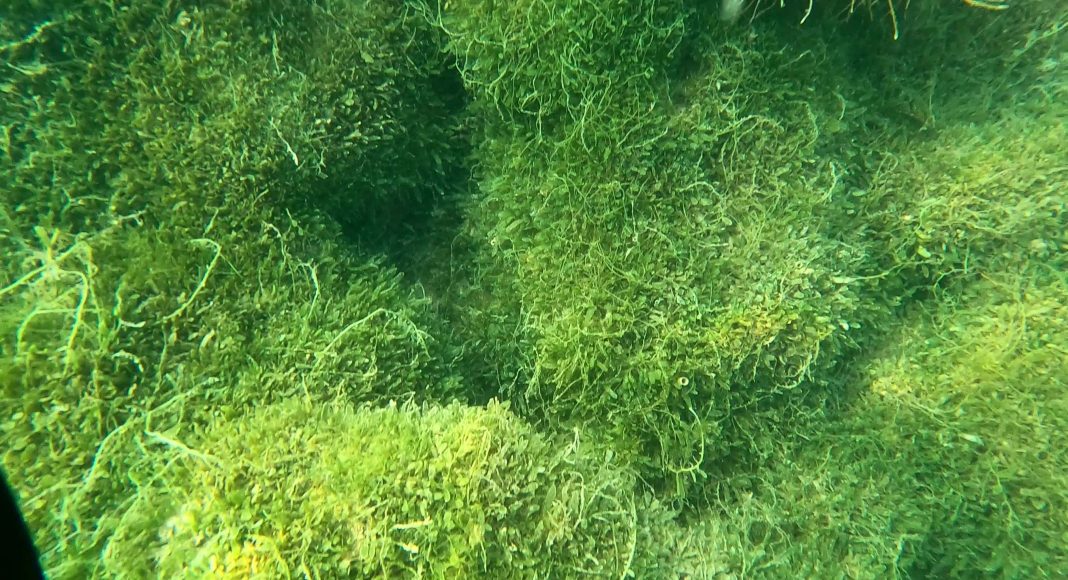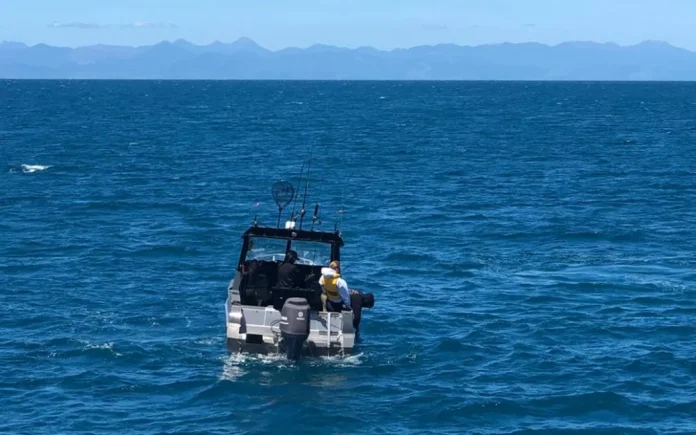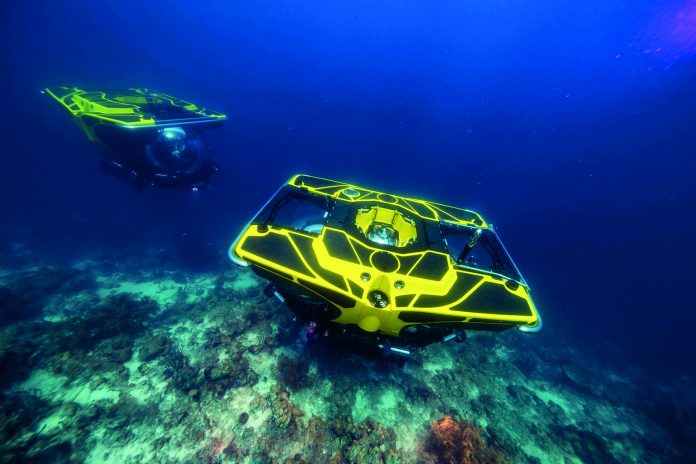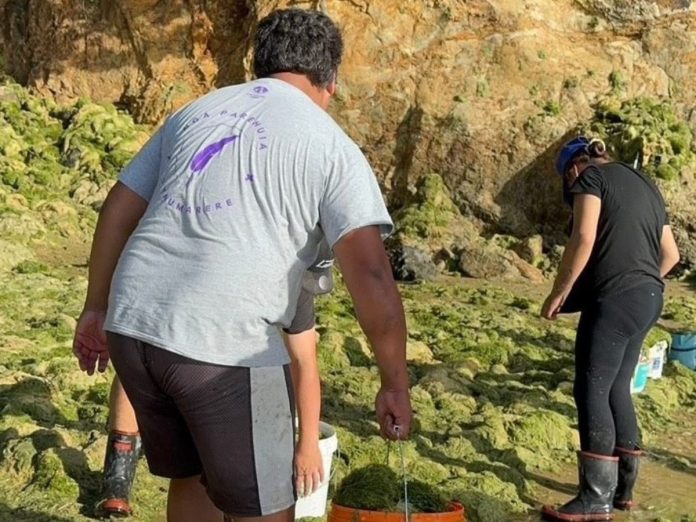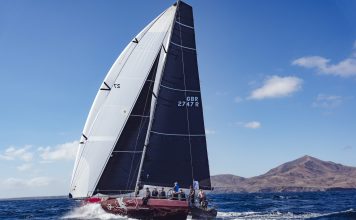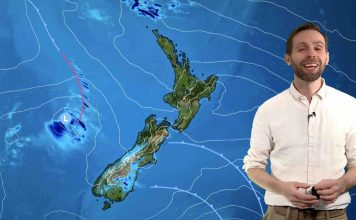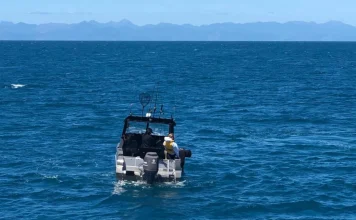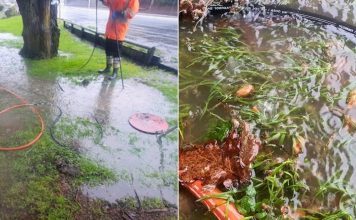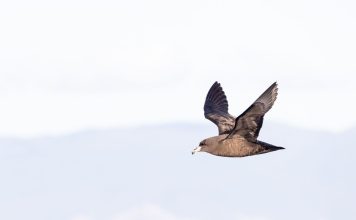Boaties are being warned to steer clear of anchoring anywhere near Hauturu / Little Barrier Island, with the Ministry for Primary Industries (MPI) issuing a Controlled Area Notice (CAN) that bans anchoring in all waters out to the 40-metre depth contour. The move is part of a national biosecurity response to exotic Caulerpa, a fast-spreading seaweed that has already impacted several popular boating areas in the upper North Island.
The CAN came into effect at 11:59pm on 3 July 2025 and applies to the entire marine perimeter of Little Barrier, making it illegal to drop anchor without a permit — unless you’re in an emergency situation.
“The CAN is to prevent the spread of the pest around the island or further afield,”
— John Walsh, Biosecurity New Zealand
A sacred island under threat
The discovery of Caulerpa brachypus and Caulerpa parvifolia on the northern and eastern shores of the island in May sparked a rapid response effort, led by Ngāti Manuhiri with the support of Biosecurity New Zealand, Auckland Council, DOC, and others. Seventeen small infestations have already been treated using chlorine under benthic mats — a seafloor-specific treatment that contains the seaweed without dispersing it.
“Hauturu o Toi is a sacred taonga to our people. Urgent action is needed to protect it.”
— Nicola Rata-MacDonald, Ngāti Manuhiri Settlement Trust CEO
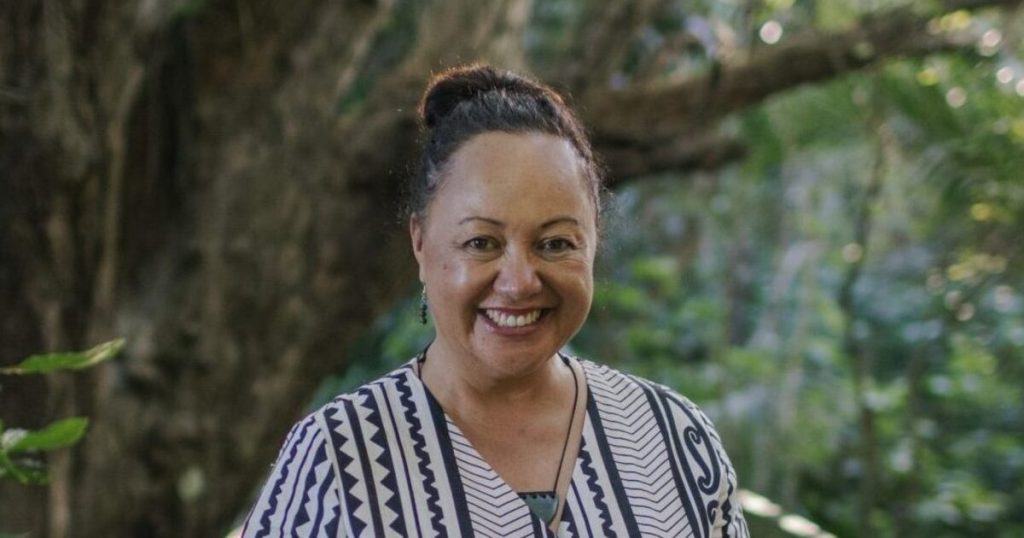
Ngāti Manuhiri placed a rāhui over the same area now controlled under the legal CAN, reinforcing the cultural and conservation significance of the island, which is also New Zealand’s first ever nature reserve.
Te Hauturu-o-Toi, as the island is formally known, is closed to the public without prior authorisation. However, its surrounding waters are regularly visited by boaties cruising the Hauraki Gulf — and it’s here that MPI says the risk lies.
How Caulerpa spreads
Exotic caulerpa is easily spread by small fragments breaking off and hitching rides on anchors, chains, dive gear, cray pots, and fishing nets. Once introduced to a new site, it can quickly form dense mats, smothering native seabed habitats and outcompeting local seaweeds.
“We know that exotic caulerpa can be inadvertently relocated when small pieces are caught on anchors and equipment,” says John Walsh, Biosecurity NZ’s pest management director.
“Stopping anchoring without a permit around the whole coastline out to 40 metres depth will greatly reduce this risk.”
Cleaning is not optional: under the CAN, all gear and vessels must be inspected and cleaned before leaving the zone. That includes dive gear, wetsuits, paddleboards, even footwear. Anything with plant material must be removed, stored securely, and disposed of safely ashore — or returned to the same body of water, as soon as possible, if no land-based option is available.
What’s still allowed?
Boaties can still transit the waters around Little Barrier, and recreational activities like swimming, snorkelling and paddleboarding are permitted — so long as gear is cleaned afterwards. The following are also allowed:
- Drift fishing (from unanchored boats)
- Spearfishing and hand gathering
- Rod and line fishing (handlines and rods, from unanchored craft)
What’s banned?
- Anchoring — unless in a declared emergency or with a specific permit from MPI (apply via caulerpa@mpi.govt.nz)
- Seabed-contact fishing, including:
- Dredging
- Bottom trawling
- Cray potting
- Set nets or flounder nets
- Moving any gear or boats from the area without complying with strict inspection and cleaning rules
For the avoidance of doubt, simply entering the area is not illegal — but any activity that touches the seabed, or any failure to clean before departure, may result in fines or even prosecution under the Biosecurity Act.
A broader biosecurity battle
The CAN around Hauturu is the latest in a string of biosecurity measures targeting exotic caulerpa. Since its initial discovery in Aotea / Great Barrier Island in 2021, the pest has shown a worrying ability to establish itself in diverse coastal habitats.
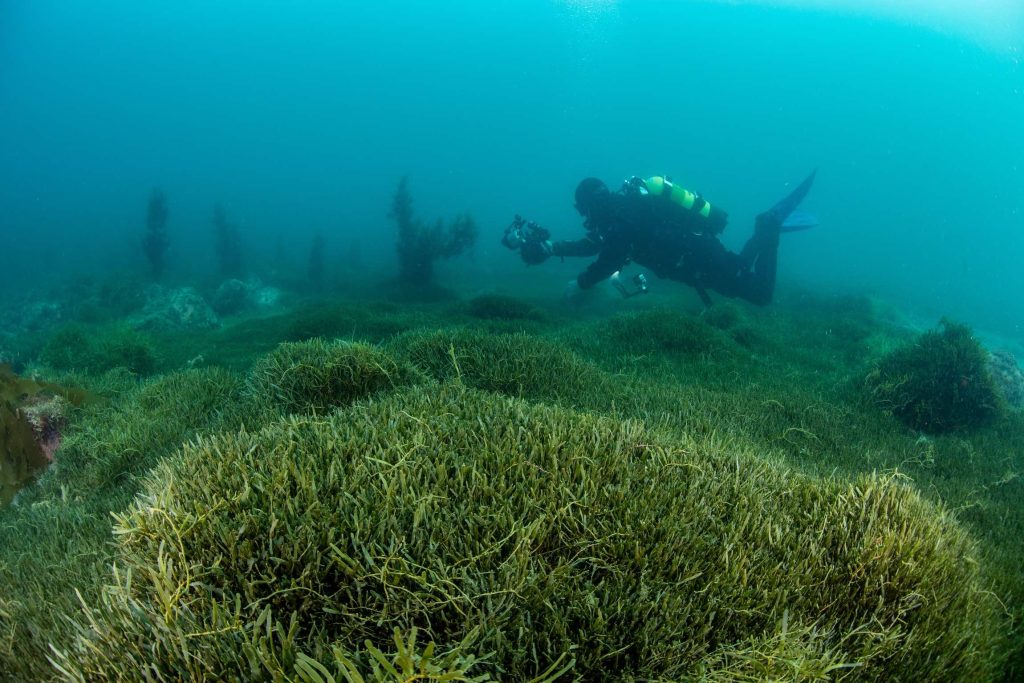
MPI has so far invested over $24 million into surveillance, control and research, with noticeable reductions in biomass in some affected areas. Alongside Hauturu, the following zones are currently under Controlled Area Notices:
- Waiheke Island (Onetangi Bay & Thompsons Point)
- Aotea / Great Barrier Island
- Ahuahu / Great Mercury Island
- Te Rāwhiti Inlet, Bay of Islands
All five CANs are due for review before their current expiry on 30 September 2025 — though extensions are likely if risks persist.
Anchoring only by permit or emergency
Boaties needing to anchor near Hauturu must apply for a permit from MPI. These are reviewed on a case-by-case basis, with conditions likely to include cleaning protocols and limits on anchoring duration or location.
Anchoring without a permit is only allowed in genuine emergencies — for example, loss of propulsion in rough weather, where no safe mooring alternatives exist. Even in these cases, boaties must notify MPI and clean all equipment before moving on.
Penalties and reporting
MPI has the legal authority to seize gear, fine offenders, and pursue criminal prosecution under the Biosecurity Act. Penalties include:
- Up to $50,000 in fines or 3 months’ jail for individuals
- Up to $100,000 in fines for companies
What boaties can do
- Check the latest maps and guidance at www.biosecurity.govt.nz/caulerpa
- Clean all gear (anchors, chains, wetsuits, dive fins, paddleboards) before leaving any controlled area
- Support rāhui set down by local iwi, even where legal controls are not in place
- Apply for permits well in advance if you believe you have a need to anchor near Hauturu
Keeping the Gulf clean
While the exotic caulerpa outbreak is being taken seriously at all levels — from iwi to government — its spread hinges on the behaviour of individuals on the water.
Boaties are not being told to stay away from Little Barrier — but rather, to move responsibly and avoid any activity that could transport this unwanted hitchhiker.








